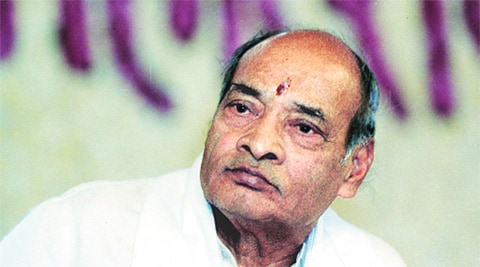
What happened after V.P. Singh’s exit in November 1990 was roughly the same as that after Morarji Desai’s departure as a result of the Janata’s implosion 11 years earlier. A lame-duck government — headed by Charan Singh in the former case, and by Chandra Shekhar, an old-time Young Turk, in the latter — limped for a while and then yielded to fresh elections. Before propping up Chandra Shekhar’s government, Rajiv Gandhi had to overcome his dislike of “that bearded fellow”, to use his own words. No wonder then, Chandra Shekhar’s government lasted precisely 120 days. An uneasy relationship between the benefactor and the beneficiary snapped when Rajiv suspected that two policemen from Haryana were spying on him.
The searing tragedy of Rajiv’s assassination took place when one of the three phases of voting was over. The remaining two were postponed by the Election Commission. Politically, there was high drama with several turns and twists. In the first place, a meeting of the enlarged Congress Working Committee (CWC) unanimously requested his widow, Sonia Gandhi, to take his place as Congress president first, and then as prime minister when the party won the election. The grief-stricken lady understandably refused. The CWC renewed its plea even more strongly and plaintively. This time round, she issued a statement thanking the CWC but reaffirming her refusal firmly. This accentuated the quandary of the party’s decision-makers because the half dozen leaders in the fray just could not agree on anyone from among themselves. Consequently, despite her determination to remain out of politics, it became necessary to seek Sonia’s advice on which of the competing candidates should be chosen.
Of these, P.V. Narasimha Rao, a man of great ability who had served as a senior minister in the cabinets of both Indira and Rajiv Gandhi, was generally considered a suitable successor to Rajiv. Here, the dramatic element in the situation was that at 69, and because of indifferent health, Rao had decided to retire from active politics. He had taken absolutely no part in the election. His belongings, after his long stay in Lutyens’ Delhi, were being packed so that he could leave for his home city, Hyderabad, as soon as the elections were over.
Even so, as is well known, Rao was not Sonia’s first choice. On the advice of P.N. Haksar, the highly respected mandarin who was once the most powerful principal secretary to Indira Gandhi but had later fallen from grace, Sonia first offered the post to the then vice president (later president), Shankar Dayal Sharma. The message was carried to him by Aruna Asaf Ali, a leftist leader and close friend of the Nehru family, and Natwar Singh. Sharma’s response was that he was “touched and honoured”, but his age and health would not allow him to “do justice to the most important office in the country”. The way for Rao was now clear. On June 21, 1991, exactly a month after the brutal assassination of Rajiv, Rao was sworn in as prime minister. In keeping with the practice established in Indira Gandhi’s time, he held on to both the offices of PM and the Congress president, even though he had promised to vacate the Congress presidency for one of his rivals, Arjun Singh.
The timing of Rao’s rise to power could not have been worse. India was facing a foreign exchange crisis of such magnitude that we had to deposit 47 tonnes of gold in the Bank of England to tide over the situation. Rao courageously changed the economic policy to that of liberalisation and globalisation. To pursue it effectively, he appointed Manmohan Singh as finance minister. He had first offered the job to I.G. Patel, who had declined it for reasons of health. The disintegration of the Soviet Union was also a grave challenge; Rao coped with it creditably. He rendered many other services to India. But he cannot be absolved of responsibility for the demolition of the Babri Masjid and for several scams, in some of which members of his family were allegedly involved.
Sonia was not particularly fond of Rao in any case. But relations deteriorated because of her feeling that he was not pursuing fully the investigations into her husband’s assassination. In any case, it is manifestly undeniable that in the book of the Sonia-led Congress, Rao is a non-person.
What a quirk of irony it is that the National Democratic Alliance government has taken over a scheme, initially sponsored by Telangana, to build an appropriate memorial for the former PM who ran a minority government for full five years in very difficult times. The Congress party is not only embarrassed but also angry. The heated debates this has led to are revealing murky facts of modern Indian history.
The writer is a Delhi-based political commentator.